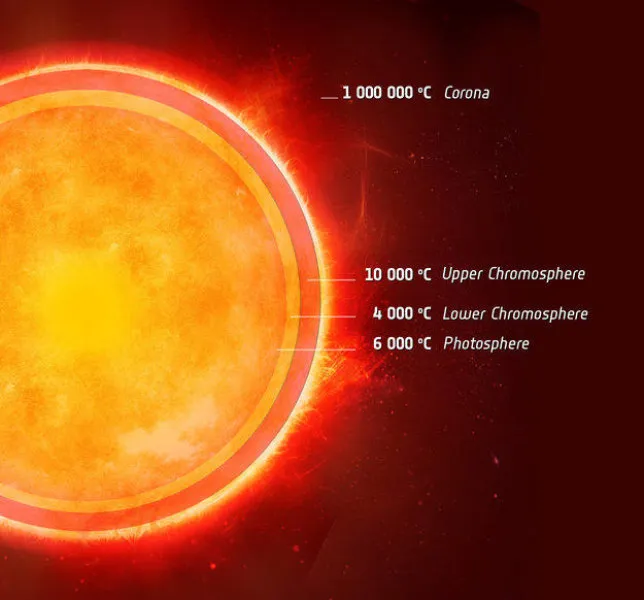What Defines the Surface of the Sun?
We can only see the photons which are directed toward us. If photons
were free to stream from the center of the Sun (where the energy is produced)
then the Sun would appear quite small, maybe 20 % of its current radius.
However, near the center of the Sun,
the density of the particles is very high and
a photon cannot travel very far before it interacts with some matter. In the
center of the Sun, the density is ~150 grams per cubic centimeter (more
than 13 times
denser than lead!). This tight packing means that a photon travels
less a hundredth of a centimeter before it interacts with a particle. Because
of this, photons are in a sense trapped and must slowly diffuse
to the surface of the Sun.
For typical photons, the diffusion time from the
core of the Sun to the surface of the Sun ranges from
10s of thousands of years to 170,000 years.
The final layer where the visible light we see escapes from the Sun is
called the photosphere. The
photosphere is thin compared to the diameter of the
Sun giving the Sun its appearance of a sharp edge.
Photons take only 8.3 minutes to travel from the photosphere
to the Earth.
.
|
 |


